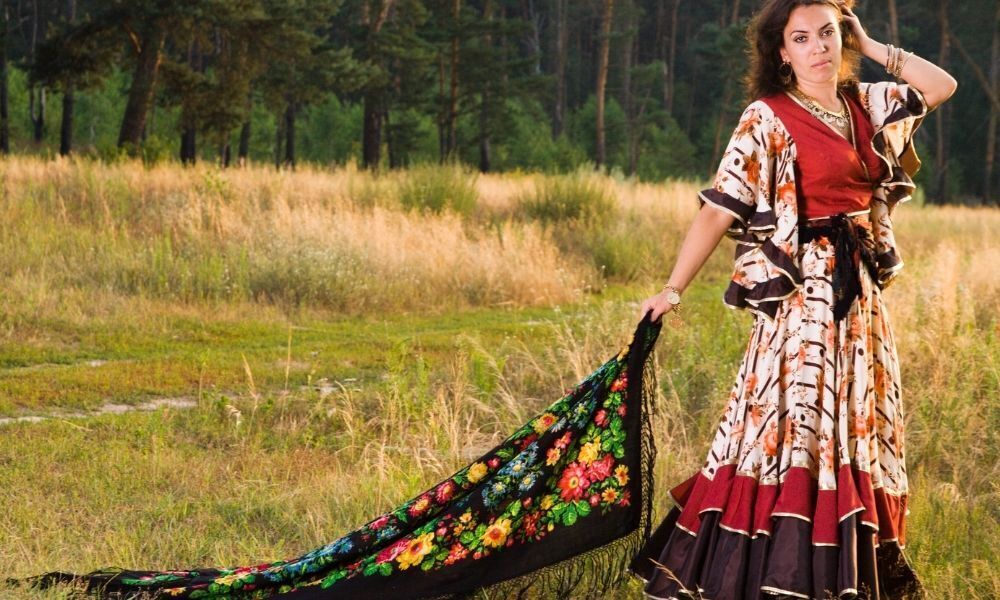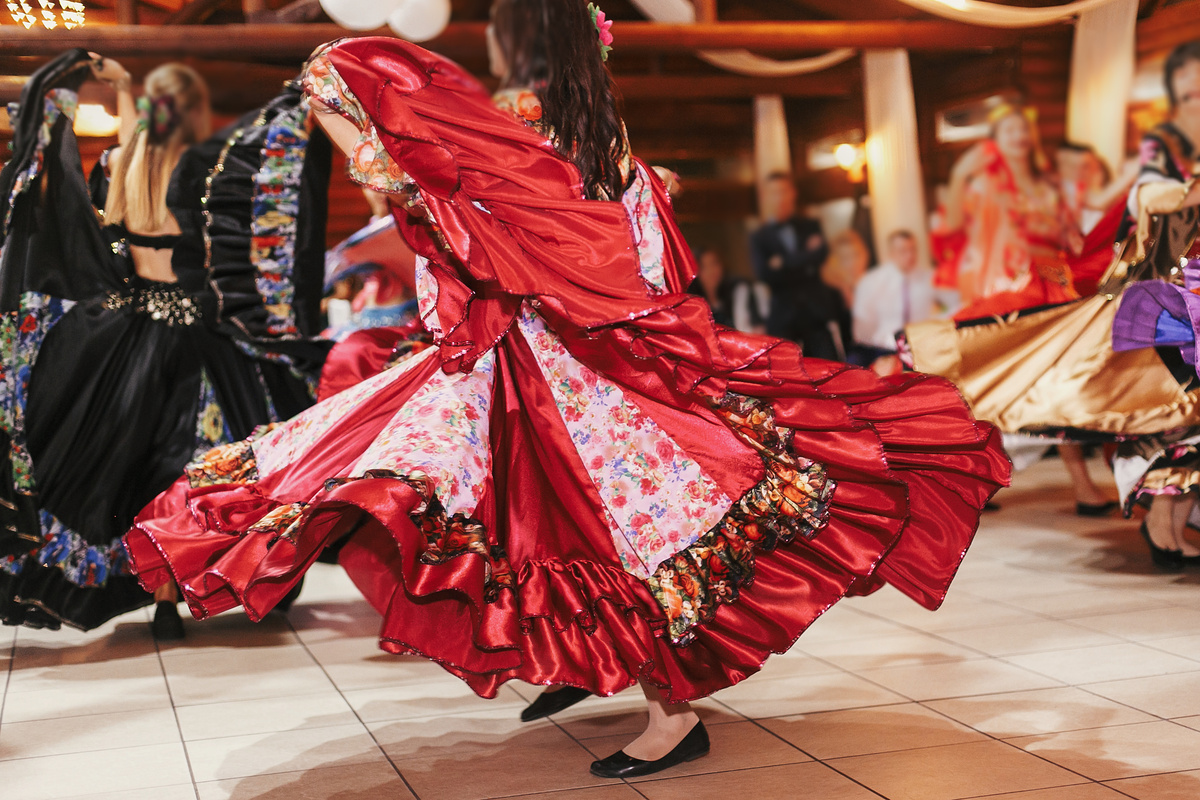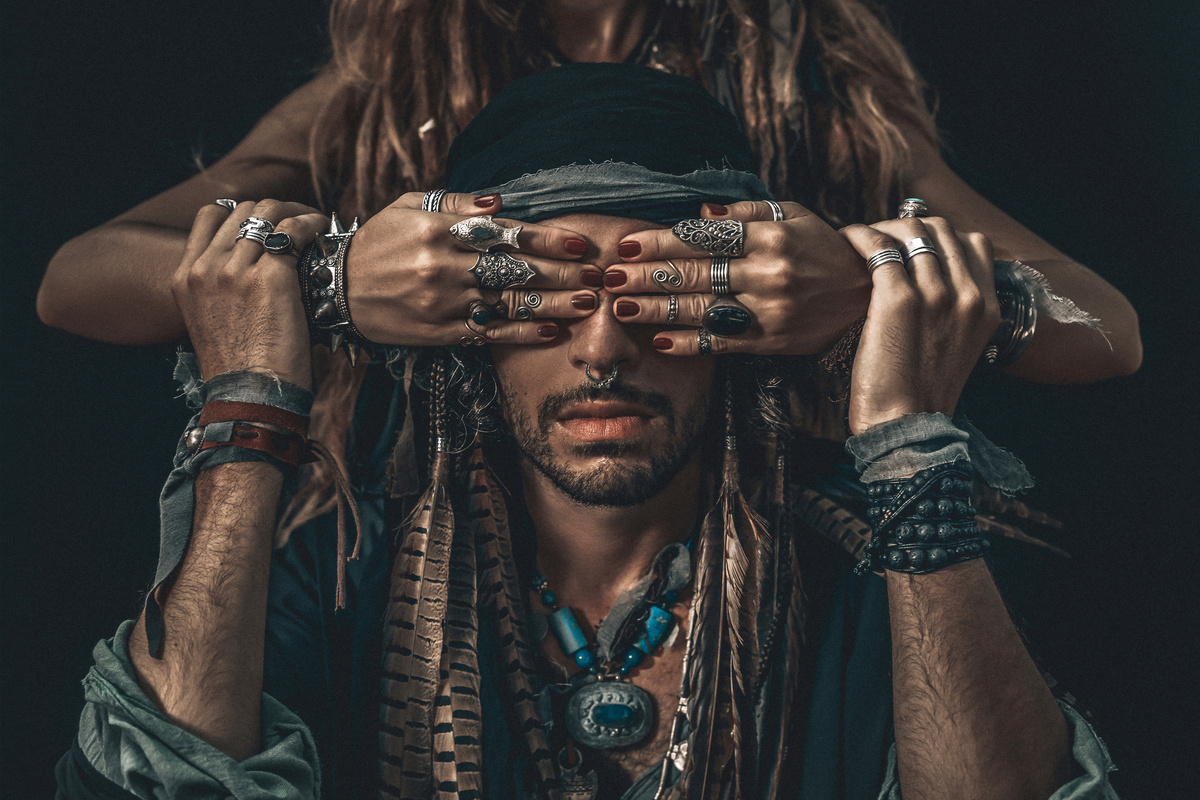Table of contents
Who was Pablo the Gypsy?

A mystical figure who involves mysteries and has great repercussions, the Gypsy Pablo lived many years ago in Andalusia, Spain. He headed a Gypsy tribe, a task previously carried out by his father, when he was still young. Disciplined and attentive, he was always attentive to the advice of older Gypsies when making important decisions.
Following gypsy traditions, Pablo was promised in marriage, as soon as he was born, to the daughter of a gypsy woman of the tribe. Raised together, they were very involved and at the age of 15 they married. They had three male children and Pablo became a respected and admired leader in his tribe.
The couple's children were also promised to other gypsies, according to tradition. But after their marriage, the problems began. Learn more about the story of the gypsy, below.
Gypsy Pablo, characteristics, history and gifts

The Gypsy Pablo was a respected leader in his tribe. Prepared from a young age for the future command of his group, he was worshiped by his people. Knowledgeable in matters of his tribe, thanks to the teachings of experienced gypsies, he wisely served as head of his clan. Learn more about his history, characteristics and more below.
Characteristics of Gypsy Pablo
Pablo was a gypsy of Spanish origin and considered a virile man with a gold ring with a small turquoise in one ear. He wore a gold chain with a pendant in the shape of a dice.
He had a habit of tinkering with herbs such as turmeric and tambor-mirim. He used a leather cup and three large dice to do divinations. From the seeds of the herbs he cultivated, he extracted the powder to do magic and had adoration for the crescent moon. His favorite flowers were roses.
The story of Gypsy Pablo
Gypsy Pablo was a memorable man. With a background rich in wisdom gained by more experienced gypsies and extremely prepared by his father, he was given the opportunity to lead his tribe after the loss of his progenitor.
He married a gypsy girl from the group and had three children, but there is always a son who decides to go against the tradition of his people. It is a story full of involvement, magic and mysteries. One of the most attractive and interesting points is when one of Pablo's sons rebels against his people.
Rebellion of the firstborn
Pablo and his wife had three sons who, still young and following the tribe's traditions, were promised in marriage to other girls of the group. However, not everything turned out as they expected and one of the sons decided to rebel.
Pablo's first son would inherit the control of the tribe, following the rules of the people's customs. But he did not want to marry as he was promised and did not accept the traditions, which generated serious conflicts among the members.
He became involved with other gypsies of the tribe, which generated anger for the promised in marriage to the girls. Aware of the situation, his father dueled in place of his son defeating the rival who disputed one of the young women. With the drastic measure, Gypsy Pablo hoped that his son would adhere to the traditions of the tribe.
Salvation of the tribe
The first-born son of Gypsy Pablo did not learn the lesson and still wanted to influence one of his brothers. Worried, Pablo was already making preparations for his second son to become the chief of the tribe. He invested in the young man, hoping to regenerate his first son.
Pablo taught his second son about the concepts of the past, which he learned from the wise ones and from his father. Satisfactorily, he managed to make the young man open his brother's eyes about his attitudes and brought him back to peace in the tribe.
Rest
After the regeneration of his first son and with the tribe living in total harmony, Gypsy Pablo gave him the leadership of the tribe. After he passed away, he was able to rest in the astral with his beloved wife and left the protection of his three children to Santa Sara. Gypsy Pablo is seen as the chief of the Gypsies that departed to the celestial plane.
Esmeralda and Pablo the Gypsy
There is another legend that says that Esmeralda and Pablo met in Italy. They fell in love and soon married. Even though marriages between gypsies are promised at birth, the tribe of both consented to their union.
Esmeralda got pregnant before her marriage to Pablo and in the sixth month she began to have problems. She suffered a miscarriage in the seventh month of pregnancy. She became ill because of the problem and soon died. Nowadays, there is a belief that the Gypsy Esmeralda helps pregnant women to have good pregnancies and successful births.
Offering to Gypsy Pablo to attract prosperity
Pablo is still seen today as a great mystical and spiritual reference. There are many traditions of requests and prayers to him. There are offerings from practitioners who seek prosperity and luck in life.
But it is important to stress that the offering should only be made when there is a request from an orixá or work entities. Otherwise, it will have no effect.
How to make and deliver the offering to Gypsy Pablo
To make an offering to Pablo the Gypsy to attract prosperity, it will be necessary to use some materials.
- White or red cotton towel;
- A good quality cigar;
- A metal or glass ashtray;
- A pewter, crystal or glass wine glass;
- A pewter, crystal or glass bowl for mineral water;
- Seven dark blue candles placed in metal or glass holders;
- Three bunches of Moscatel grapes, drizzled with cognac;
- Three red cloves to be placed next to the grapes;
- Seven coins washed with soap, water and salt.
Arrange everything on the tablecloth and light the candles. When the candles burn, collect the objects. Leave the carnations in the water and the grapes in brandy. Always make your requests for the good.
Gypsies in Umbanda, magic materials, candles and others

Many people question the characteristics of Gypsies and details such as working materials, the use of candles and other aspects. In Umbanda, Gypsies are known as party people and because they transmit joy, they represent smiles, noise and abundant energy.
They are beings of light who once inhabited the world. They drew upon knowledge that led to wisdom, leadership and attitude. Learn more about them below.
The Gypsies in Umbanda
Gypsies have become guides and spiritual guides who understand people's strengths, instincts and weaknesses. They act in a serene way, with strength and a lot of empathy. They represent regular work in Umbanda. They work with respect, a feeling used in their life tribes.
They always use joy in their work, to better distribute orientations and energies. The objective of gypsy magic is always to work for the good. They never use their forces for contrary effects. The Umbanda Gypsies invest in health, well-being, and mental, physical and spiritual balance.
Women
Gypsy women in Umbanda are represented by Pombagiras. They are connected in the popular category of spirits of the Eastern line.
Popularly, the Pombagira is the seduction and fascination of women, with a high level of attraction. They would be responsible for heating up the lives of women, in the feelings of love and deep desires. The Pombagira would be capable of manipulating the attractive sexual force between the masculine and feminine sexes. She also works on the valorization of women.
The men
The gypsy men in Umbanda are the Exus. They follow a similar line to the gypsy women in Umbanda, but in other aspects. The gypsy men did not have the same gestures and features as the gypsy women. While they performed sensual dances, it was up to the men only to admire them.
Perhaps this explains the massive presence of women in Umbanda. As men are more shy to dance or sing, these characteristics would hinder the flow of energies. It would be up to the gypsy woman to welcome the male gypsy spirits in Umbanda.
Gypsy colors in Umbanda
Gypsies use a variety of colors. Since they work with a focus on joy, energy and understanding, they like colors that refer to well-being, parties, peace and smiles. The colors of the Gypsies represent their way of life and are associated with their habits. Like yellow, since tradition says that Gypsies have a lot of wealth. These are also known as the Gypsy rainbow.
- Blue, it leads to purification.
- Green, it brings hope.
- Yellow, represents joy and wealth.
- Red, passion, strength, protection and work.
- Rose, love and sentimentality.
- White, peace and spirituality.
- Lilac, intuition and elimination of negative energies.
- Orange, celebration and prosperity.
The different materials of magic and ways of working
The materials of gypsy magic are distinct. From the cultivation of herbs, whose seeds were transformed into powders for spells and conservation of sacred symbols or images, these are some of the main elements in gypsy magic.
As a people who maintain traditions of their ancestors, the use of these materials is important in rituals, festivals and day to day. If you wish to worship the Roma tradition and magic, you can have the Roma Altar. It will represent your faith and devotion.
There are spices that represent the works of gypsy magic. Used in foods, spices can grant the wisdom and desires needed to cultivate faith and feel the vibrations of the gypsy people.
Candle color for gypsies in Umbanda
Each day of the week calls for different candles due to the influence of colors, which represent more power in fulfilling requests. Check it out.
- Blue candle for Sunday, represents peace and spirituality.
- Yellow candle for Monday represents the capacity of thinking and intellectuality.
- Pink candle for Tuesday, favors love affairs.
- White candle for Wednesday, brings protection and elevates spirituality.
- Green candle for Thursday, promotes abundance, abundance and prosperity.
- Red candle on Friday to ask for courage, love and power.
- Purple candle on Saturday, to ask for protection and ward off negative energies.
Some powerful gypsy spirits

There are many gypsies who have gained prominence. Evident spirits, they have become great mentors to their devotees. We highlight the gypsies Esmeralda and Carmencita, and the gypsies Iago and Wladimir. They are strong and work based on their joys, respect and attention to people.
Their strong point is understanding, wisdom and guidance, indisputable qualities they have learned in their tribes. Through prayers, you can have them as allies in your devotion and seek balance and positivity. Get to know more about each of them.
Gypsy Carmencita
The Gypsy Carmencita lived in Andalusia, Spain. Very beautiful and vain, she wore colorful clothes and bathed in gold, with her rings, earrings, bracelets and necklaces. She liked to dance and sing, and kept castanets and tambourines.
Due to the loss of her great love, she never married. Her suitor died very young, before they became adults and married. However, the spirit of the young man remained with her all the time. Because she felt fulfilled, she gave up getting married and having children, believing in the presence of her eternal love.
Emerald Gypsy
The Esmeralda Gypsy lived in Spain and belonged to the Tarin tribe. She was considered beautiful, with brown hair below her shoulders and green eyes that resembled emeralds. She had a wide smile that expressed a lot of joy.
She lived only for dancing. She had the habit, on Sundays, of going to the town square to perform. She earned a lot of coins from her audience, who were enchanted by her mannerisms. In one of her presentations, she met a man and they fell in love.
They went to live together against the wishes of their families until the union ended. Pregnant and trying to reverse the separation without success, she even ordered the death of her love. Repentant, she tried to undo the situation and ended up dying in place of her beloved.
Gypsy Iago
Known as a healer, the Gypsy Iago became the leader of his tribe because he had this gift. He did not appear to be so young because of the high wisdom he possessed. His early death was associated with his healing powers. He died at the age of 21 and became known for his power of miraculous cures.
He was a great counselor and knew how to differentiate good friends from false friends. He is a helper in healing processes and because he was a leader, he is a great reference in commanding people. When mentioning this gypsy, he conveys security and confidence, characteristics that are remarkable in his personality.
Gypsy Wladimir
The Gypsy Wladimir was the leader of the Caravan of Light, together with his sister Wlanasha. He had light skin, black eyes and hair and was always well groomed. He played the violin since he was six years old. He always carried a silver dagger with him.
A tragedy befell his family. Wladimir and his brother fell in love with the same woman and fought a duel. On the day of the clash, his brotherly love for his brother spoke louder and he was stabbed in the heart.
Wladimir's brother, believing he would be with the girl, saw his dream crumble when the girl committed suicide after the duel. Wladimir is the gypsy who protects the work and is often evoked by those who need work.
What is the relationship between Gypsy Pablo and prosperity?

Gypsy Pablo is known as a great mentor and wise man. Respectful and deeply intimate with more experienced people of his tribe, he has always cared for the traditions and customs of his group.
Through his knowledge of magic and works, he sought prosperity in his tribe, elevating the concepts of well-being and unity among his people. So, to achieve prosperity in your life, it is advisable to seek the help of Pablo the Gypsy.

